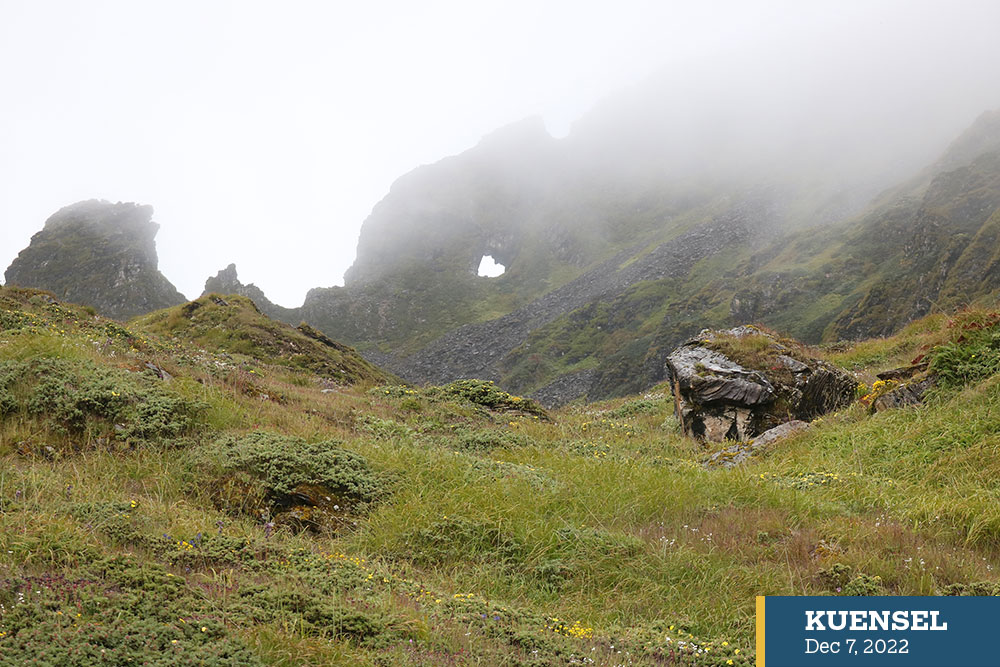Chhimi Dema
Durshingang or the Black Mountain, which is home to a local deity, Jowo Dungshing, is one of the least explored mountain ranges in Bhutan.
Apart from foresters, researchers, and local herders making a few visits once or twice a year, the place remains largely secluded.
Durshingang, according to researchers, has a wealth of diverse plant and animal species–some explored and some yet to be explored.
To collect specimens for the National Herbarium and document the rare and endemic plant species in the country from Durshingang, two National Biodiversity Center officials—Phuentsho and Rinchen Dorji went on a botanical expedition in August last year.
The expedition’s outcomes were published in NBC’s Status Report 2022 last month.
What does it take to go on a botanical expedition? What do researchers do during a botanical expedition?
It was Phuentsho’s third trip to the Black Mountain, the only trip when he could reach the mountain.
During his first trip, he could not go beyond Yenduchhu. On the second trip, heavy snowfall stopped the team midway.
“I heard stories about the mountain when I was young; it has never gone off my mind since then,” he said.
The Black Mountain range, located in central Bhutan, is part of the Jigme Singye Wangchuck National Park, formerly known as the Black Mountains National Park.
It falls within Wangdue and Trongsa.
Phuentsho and Rinchen Dorji collected more than 40 different plant species, nine of which were new to the National Herbarium.
“We were fortunate to have stumbled upon Primula chasmophila during the excursion, a rare and endemic plant that can only be found on the Black Mountain’s true peaks,” wrote the authors in their article.
Primula chasmophila was rediscovered in 2019, after 82 years.
The two officials also collected Nardostachys jatamansi locally called pangpoe which has medicinal value.
Phuentsho said that such botanical expedition is important to strengthen botanical information and knowledge-base through exploration, collection and documentation of plant diversity in the country.
He said that since the Black Mountain range is separated from the northern alpine area, the area is expected to have some endemic flora and fauna.
The team travelled from Phobjikha from where three routes lead towards the Black Mountain. They travelled from Zizi to Wangchekha through Sala La.
It took the team 21 days to travel and collect specimens from the mountain.
Rinchen Dorji said that the most memorable moment during the expedition was sighting Primula chasmophila.
“The journey was tough with pouring rain, less drinking water, tough terrain and heavy backpacks. But when I saw the landscape and the plant all the difficulties along the way were forgotten,” he said.
The National Biodiversity Centre has no capital budget for the fiscal year 2022 to 2023.
This is likely to hamper conservation efforts with no budget for officials or researchers to go to the fields for specimen collection or carry out a similar botanical expedition.
Rinchen Dorji said that such expedition or research is important to know what plants are there in the wild or which plants are vulnerable so that efforts can be made to conserve these plants. “It is impossible to make these expeditions at our cost.”


